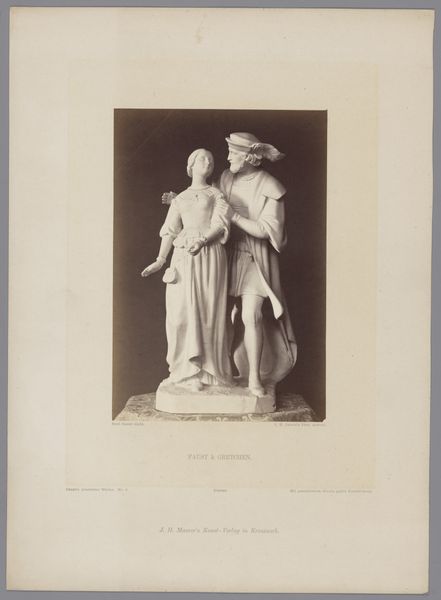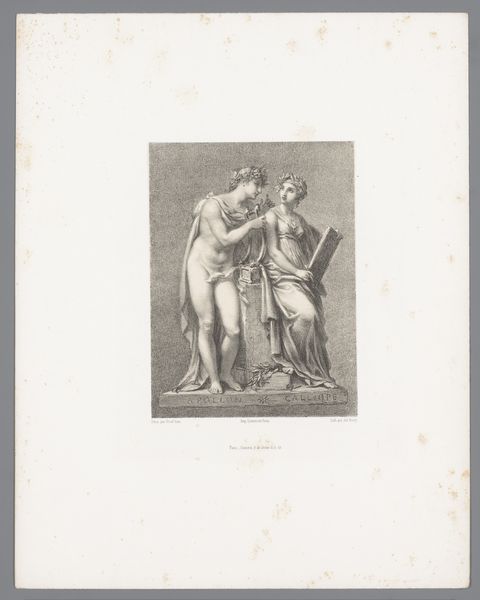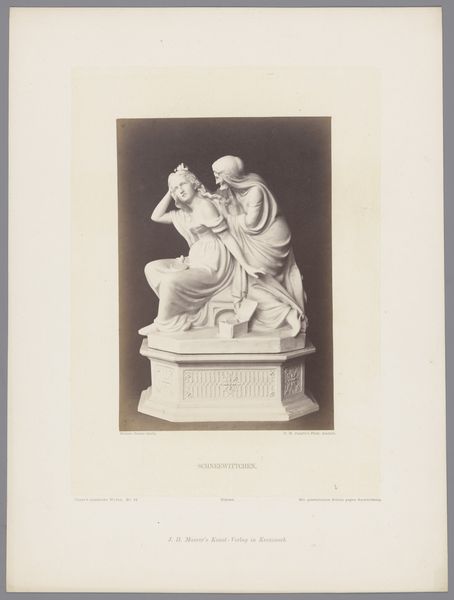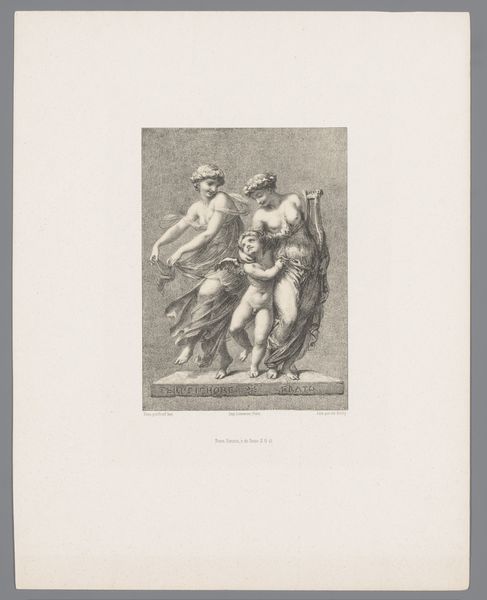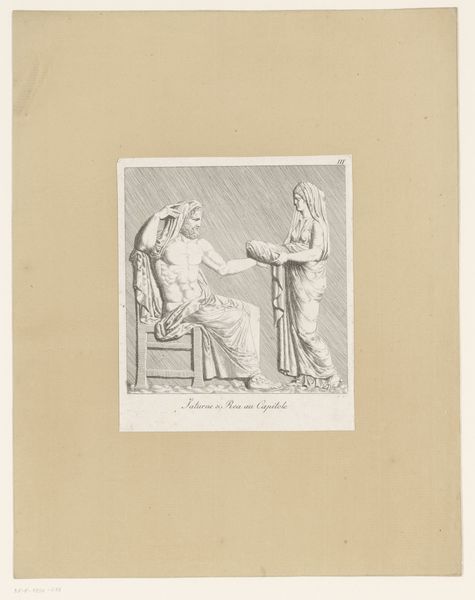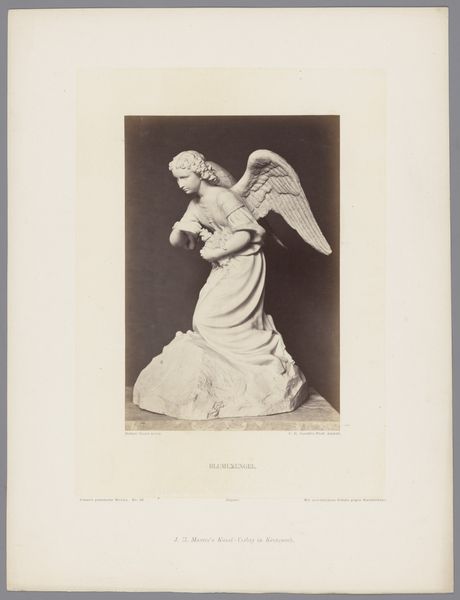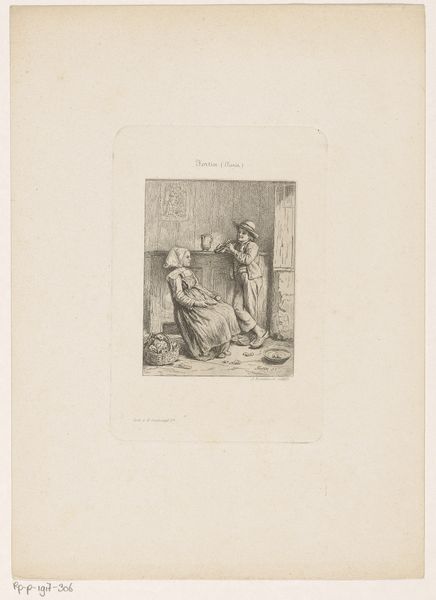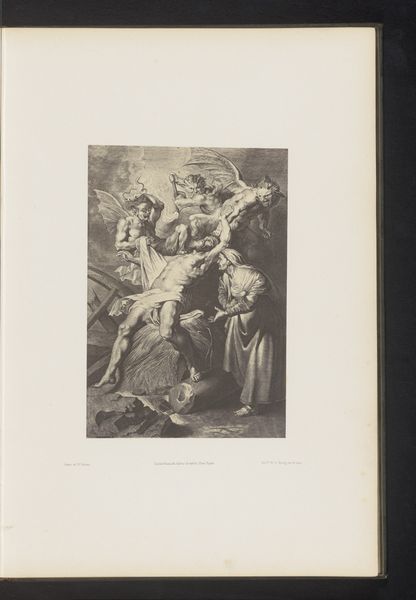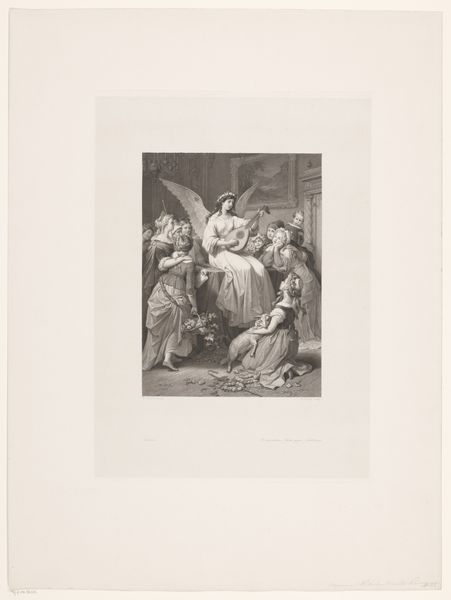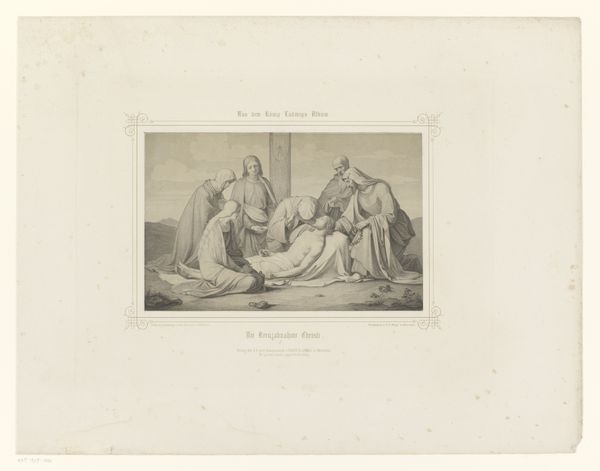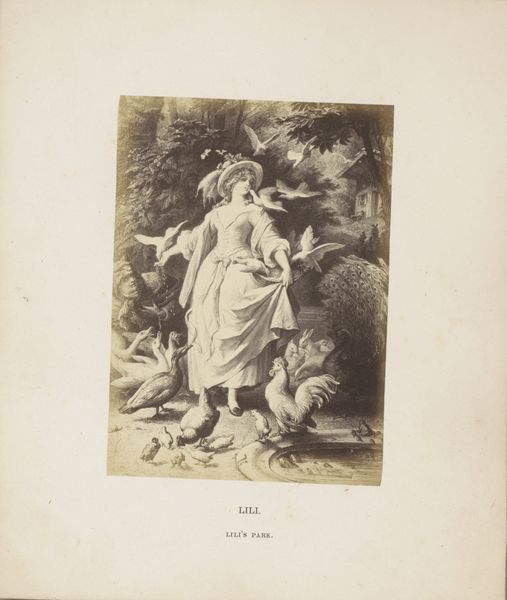
#
photo of handprinted image
#
aged paper
#
pale palette
#
pale colours
#
ink paper printed
#
light coloured
#
white palette
#
personal sketchbook
#
sketchbook drawing
#
sketchbook art
Dimensions: height 339 mm, width 267 mm
Copyright: Rijks Museum: Open Domain
Curator: This rather charming print is entitled "Clio en Urania," created around 1851 by Julien-Léopold Boilly. I'm struck immediately by how ethereal the two figures look on this pale toned paper. Editor: Yes, it does have a delicate, almost neoclassical feel. What resonates with me is how Boilly, a well-known genre painter, turns to these allegorical figures. He is known for scenes of everyday Parisian life, so seeing him depict the Muses feels… deliberate. Why Clio and Urania, I wonder? Curator: Perhaps it speaks to his aspirations beyond the everyday. Clio, muse of history, and Urania, muse of astronomy – it is a pairing which elevates the subject beyond fleeting moments. In this context, the aged paper becomes almost a historical artifact in itself, giving visual and tactile dimension to Clio's historical significance. Editor: Indeed. Consider how academies in the mid-19th century were establishing hierarchies of art. Genre painting, while popular, was seen as "lesser" than history painting. This image could be read as Boilly trying to engage with and legitimize history, perhaps staking a claim for a more elevated status. Note the prominent globe – a potent symbol, it would be worth considering where and how the artwork was shown. Was it to participate in any particular scientific or cultural discussion of its time? Curator: And doesn’t that globe symbolize, too, the ambition of historical narratives themselves? It offers this invitation into worldviews, from one era to another. The light colors soften this ambition slightly – but those details of clothing, the facial expressions… these still connect directly across time. It has echoes of a Roman fresco. Editor: Exactly! Even though printed, the detail evokes monumentality. It serves almost as a record of knowledge and authority as established and understood then. It reminds us that what seems "classical" now was once a contemporary mode of expression shaped by institutional ambitions and socio-political climate. Curator: I suppose that’s why I find this dialogue of two muses so compelling. On the surface it's a tribute to classical ideals, but beneath, it murmurs of artistry navigating its own era. Editor: Yes, an artwork reflecting upon history whilst simultaneously becoming a part of it. That’s what really sticks with me now.
Comments
No comments
Be the first to comment and join the conversation on the ultimate creative platform.

